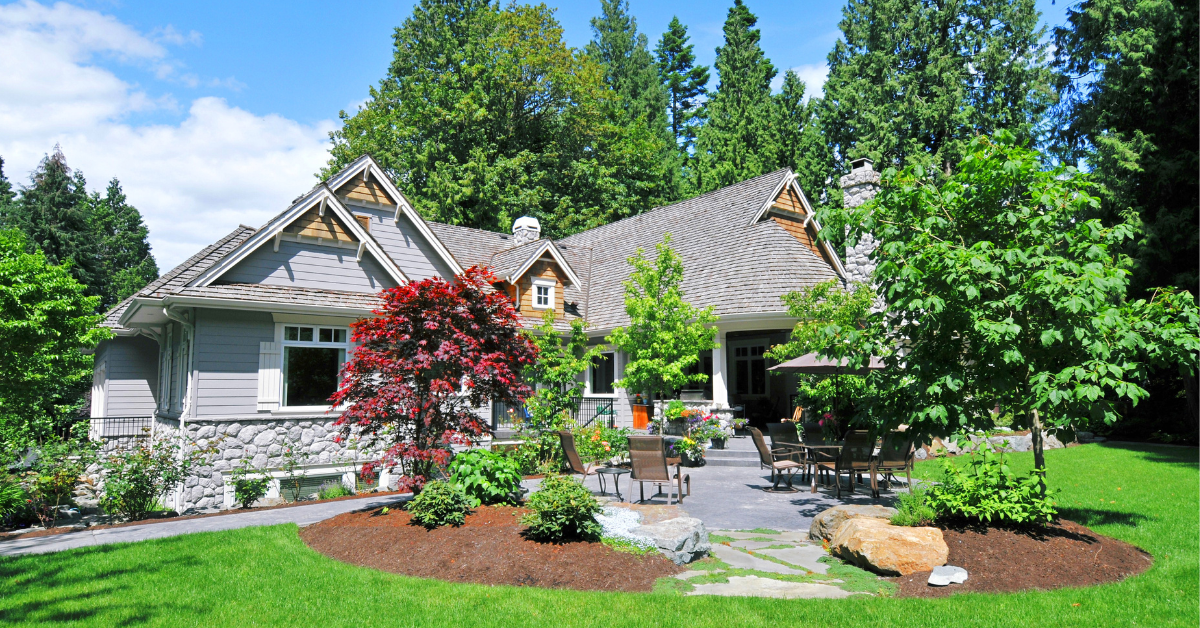When designing your landscaping, you’ll want to develop a plan. Looking for ways to keep your design elements simple and low-maintenance ensures that a yard is practical and functional. Saving you time, work hours, water, and money are all fantastic reasons for coming up with some low-maintenance landscaping ideas.
Planning and Preparation
While rolling up your sleeves, be sure to look at the site’s conditions. This will help you pick the best methods for accomplishing any landscaping goals.
First, you have to know what’s desired. That’s why step one is simply establishing goals and priorities for the design.
Next, you can investigate and decide on the right flowers, plants, and other materials you want to use. If you want to enhance the beauty of a yard or garden using something easy to take care of, consider:
- Abelia Kaleidoscope
- English Lavender
- Licorice Mint
- Coral bells
Of course, while in the planning stages of any project, you need to establish the budget. The amount of money spent on such a home improvement project should be thought of as an investment in the property itself. Still, most people have a limit they can’t exceed.
Design Principles for a Low-Maintenance Landscape
Simplicity is key! Consider your arrangements. What you plant (and where) affects maintenance needs. Arrange your plants in clusters and don’t scatter them haphazardly. You’ll want to put plants in groups according to their needs and functions.
Try envisioning the composition of a yard or garden like it’s a tapestry. Everything should flow together visually. It should be interesting and create symmetry. Remember native plants or those that’ve adapted to the local climate will need less hands-on care than more exotic varieties.
You can also use softscapes combined with hardscapes to create harmony and visual appeal. Hardscaping elements such as stone, rock, pavers, or even a gazebo can be used with softscaping materials like flowers, trees, and bushes.
Strategies for Low-Maintenance Landscaping
Few people enjoy weeding. You can use mulch to reduce weed growth and conserve the moisture in the soil.
You’ll want to be certain the plants all get enough water, so having the right irrigation system is important. In a small yard, a drip system gradually gives a plant’s roots water.
You can improve plants’ overall water consumption rates by installing irrigation controllers. These can be set on a weather-determined schedule using sensors.
Yard work is a chore few enjoy. So keep in mind a smaller lawn is easier to mow. If you don’t have a lawn, the mower can stay in storage.
Avoiding Pests
No matter what type of lawn you have, you’ll want to keep the bugs and pests out. There are some plants which attract pests and some that repel them. Roses tend to attract bees and other bugs. Marigolds repel mosquitos, and basil deters common houseflies. A gardener’s best friend, however, may be the chrysanthemum which wards off ants, ticks, and even roaches.
Regular monitoring and upkeep of a landscaping project keeps it pest-free. This also ensures it continues to look its best and function as intended.
Professional Tips for a Successful Low-Maintenance Landscape
Today there’s a growing focus on Incorporating eco-friendly practices and materials into landscaping. These techniques can include conservation efforts such as collecting rain to water your plants and flowers. Composting is another popular environmentally friendly way to help the soil’s richness while reducing organic waste. Grasscycling, where grass is used as a form of fertilizer, is good for the environment and lowers maintenance costs.
As you design a landscaping plan, remember to consider long-term maintenance plans and sustainability. Additionally, it’s important to keep all four seasons in mind—not just spring and summer!
Final Thoughts on Designing a Low-Maintenance Landscape
When designing a low-maintenance landscape, consider that:
- You may want a lush green lawn that runs all the way to the end of the property.
- You might want to build a patio and have no grass at all.
- Whatever you want is possible with proper forethought and planning.
Think about all the types of low-maintenance plants you want and try to arrange them into attractive groupings. Remember that some plants curb pests. You’ll also need to be certain of the project’s budget and take sustainability into account.
A well-designed, low-maintenance landscape can be enjoyed for many years. Imagine all the seasons to come. Remember we’re here to help, so contact us today!

